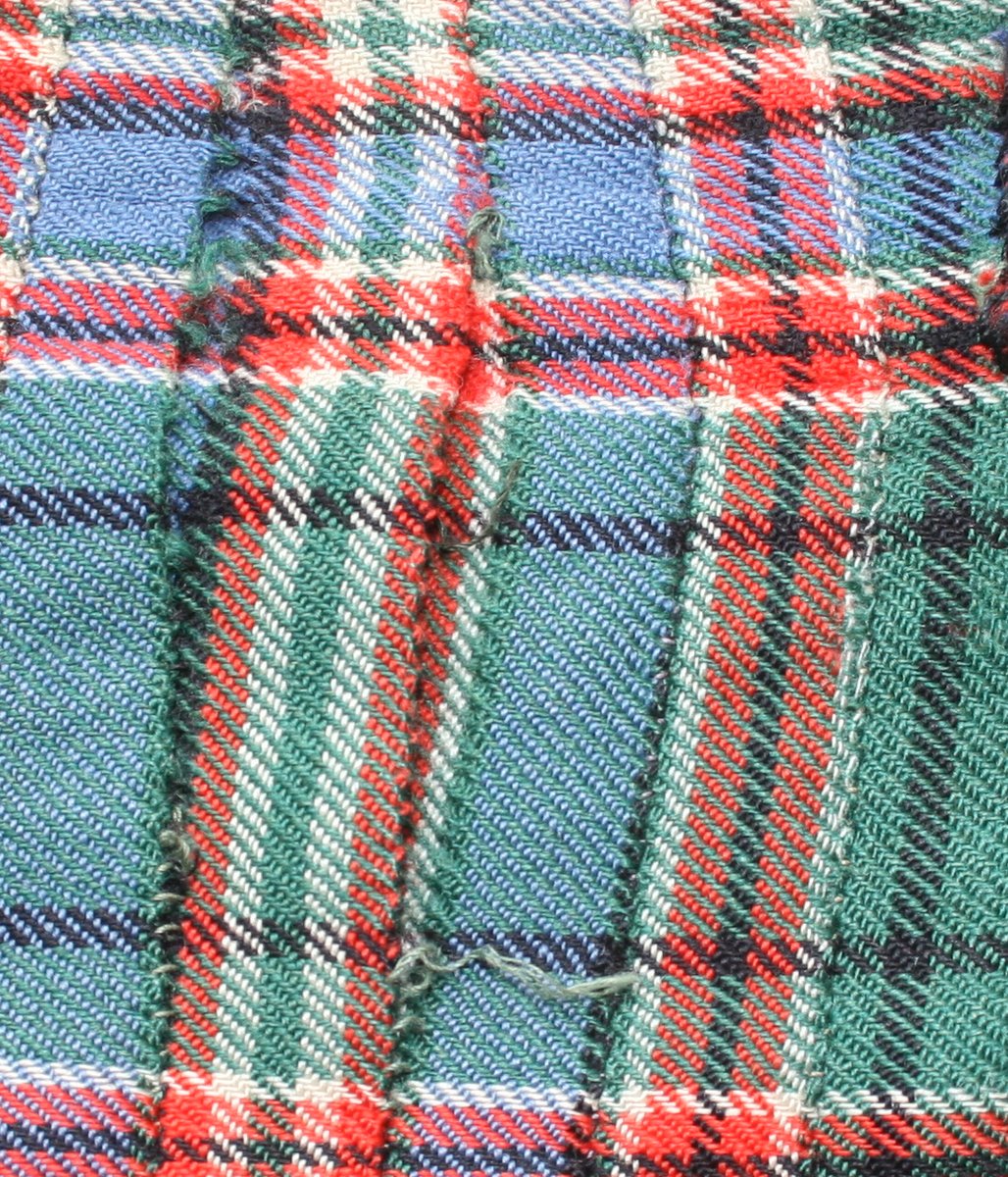It’s not unusual for kilts to need to be altered, perhaps they have grown a little smaller over the years, and no longer quite fit, or perhaps you have been lucky enough to be handed down a family one, and it’s just not fitting properly. Some alterations are fairly simple, for instance moving the buckle and straps which can easily allow an extra inch or two without drastically changing the look of a kilt. Hemming a kilt is also an option, anywhere between 1”-3”can be taken up. For a boys kilt making a kilt with a hem ensures that the kilt will have a much longer useful life.
A hem is hand sewn using small but long stitches which only just catch the back of the front fabric so that the stitching remains almost invisible. It is important that these stitches have a little bit of “play” in them to allow some movement otherwise the hem will bunch up and become very obvious. A consideration also must be made for the placing of the hem so that from the front, the sett of the kilt still looks reasonable, so there is always has to be a little bit of compromise.When carefully done the stitching is virtually invisible from the front of the fabric
Repairing a kilt is hard and slow work, and unless the kilt is a valuable one, it might not be worth the extra time and money, and putting the money toward a new one, but of course sometimes a repair is the best option
The kilt pictured below is over 50 years old and has been worn by the same person very often, It has been repaired many times, and does show great wear and tear, but it has a strong sentimental attachment to the owner, so while it will never be a “best” kilt, repairs have been done to ensure that it is still wearable for everyday. The fell and pleat edge stitching were coming apart, either from being stretched, or the thread fraying and decaying, so by using small stitches and sometimes with the use of a support fabric on the inside the seams can be reconsolidated. On the buckle hole the edge of the fabric had simply worn away, so the only solution was to bind the edge in a plain coloured binding, which isn’t even seen when the leather strap is in pace. The kilt also needed to be completely re-lined as well with new cotton, as the last one had torn exposing the inside workings , and had discoloured and aged badly. I don’t normally see kilts as bad as this, but even so this kilt ended up with a new lease of life.

It is possible simply to move the buckles a little to gain a few extra inches,which normally only takes a few hours, gaining more space is more challenging , sometimes by adding extra pleats but using the inner apron and then adding additional cloth which is hardly ever seen, but any of this is only done after much consultation as it can be very time consuming, indeed sometimes it might be cheaper to start a new kilt!





